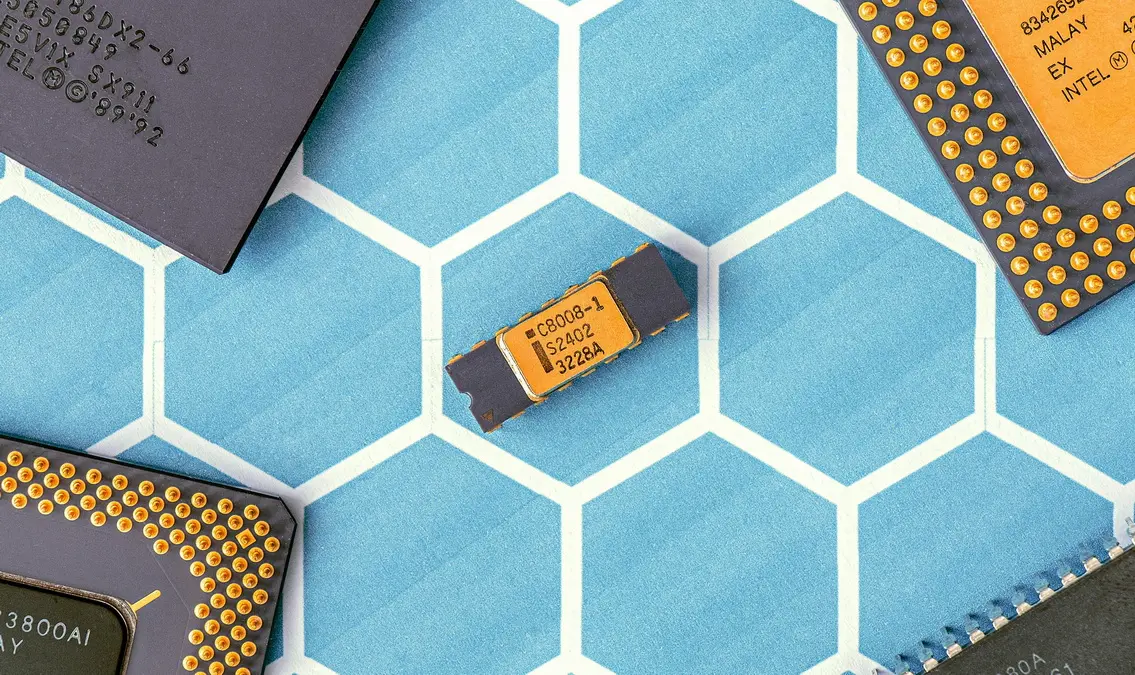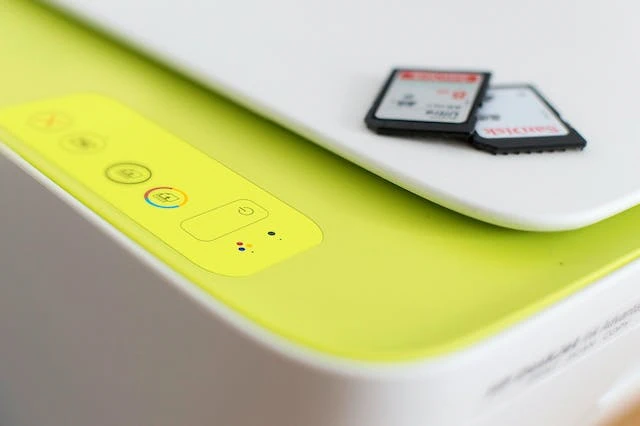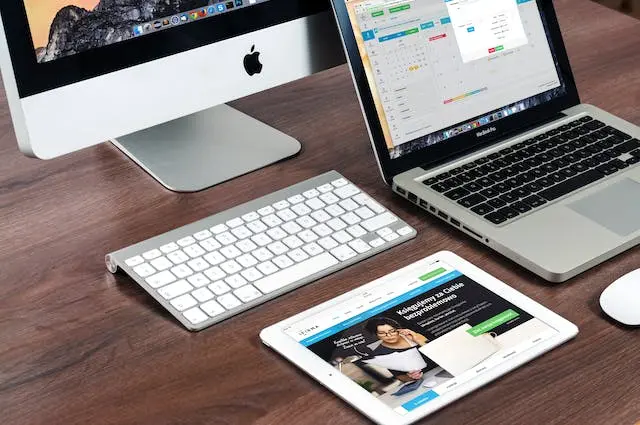What is IT Asset Management, Why is It Important?


Technology underpins nearly every aspect of a modern organization. Whether it’s digital software or a physical asset like desktop computers, your organization relies on IT assets to stay productive and efficient.
However, managing your technology assets can be complex, especially for larger organizations.
To keep up with the growing scale of this technology, more businesses are investing in IT asset management (ITAM) solutions. This technology tracks and manages all digital and physical IT assets in one place, giving leaders unparalleled visibility into their usage metrics, costs, compliance, and more.
Your organization’s approach and software setup have a tremendous impact on the success of your overall IT asset management approach. In this guide, we’ll explain how IT asset management benefits organizations and share best practices for mobilizing ITAM technology.

Image by Jonathan Borba from Pexels
IT asset management (ITAM) is a strategy for tracking all physical and digital IT assets in a single place. ITAM helps organizations get an accurate account of technology asset lifecycle costs to maximize the value of their investments in IT hardware and software.
Instead of managing hardware in spreadsheets or paper-based check-in/check-out logbooks, ITAM software makes it easy to track all assets in one place and monitor their usage data.
ITAM doesn’t just track assets. It also supports:
Cost management is definitely a plus, but the ultimate goal of ITAM is to help organizations leverage their IT assets effectively, legally, and efficiently. With the right setup, ITAM reduces downtime and boosts organizational productivity.
Check out the video below to learn more about ITAM:
IT asset management software generally breaks assets into two categories: digital and physical. You need both to stay productive, but how you track these assets in an ITAM solution will differ.
Physical IT assets are tangible items you can touch. These assets are part of your technology infrastructure and include assets like:
Most organizations need a solution for tracking physical assets because it’s easy for them to break down or go missing. However, it’s just as important to use ITAM to track your digital assets, which often includes:
Ideally, your organization’s ITAM solution should track all IT assets. Tracking one type and not the others could create blind spots that cost more in the long run.

Image by Christina from Unsplash
IT asset management is critical for all organizations, whether you run a small startup or a multinational enterprise.
You can only manage what you measure, which is true with ITAM. Instead of investing in IT assets with zero oversight, an ITAM solution accurately tracks and manages IT assets.
Some modern ITAM platforms will even do all of the management for you through hands-off features like machine learning and artificial intelligence.
With ITAM, you can avoid overbuying or underutilizing equipment and software. It identifies redundant or underused assets you can reallocate or retire to save money. ITAM also makes it much easier to predict future IT expenses, allowing for more accurate budgeting and financial planning.
Compliance is essential for all businesses, but it’s crucial for highly regulated industries like chemical manufacturing and pharmaceuticals. ITAM tracks all software licenses, warranties, and related regulatory requirements for you, maintaining an accurate inventory of all IT assets that could help you avoid issues related to software licensing.
Effective asset management also improves your company’s security posture. When you know where all of your assets are, it’s much easier to secure them against theft or loss, which can lead to expensive security breaches.
ITAM also ensures all hardware and software are up-to-date and properly maintained, protecting you against evolving cybersecurity threats.
IT asset management gives you a clear view of available assets to improve resource allocation and give employees the tools they need to do their jobs. In this way, ITAM reduces downtime and improves response times, especially for IT-related issues.
Plus, well-managed IT assets tend to have longer lifespans, reducing the downtime that comes with unexpected breakdowns and replacement orders.
ITAM sets your business up for success in the long run. It provides valuable data on IT asset usage, which you can use to make strategic decisions about technology investments and upgrades.
ITAM also makes it easier to align your IT assets with your organization’s mission and long-term goals, helping you stay true to your mission.

Photo by Fernando Arcos via Pexels
IT asset management has many benefits, provided you follow a structured process for maximizing your assets. Whether you have an existing ITAM process or want to create your own from scratch, follow these best practices for IT asset management.
Most modern IT asset management solutions track both digital and physical assets, but this isn’t always the case. Some platforms only track digital assets like licenses, subscriptions, and digital media.
Tracking one type of asset is helpful, but your organization still needs hardware like computers, servers, and networking equipment to access these digital assets, so go with an ITAM solution that tracks all asset types.
Effective inventory management and tracking are a must for ITAM. Instead of manually entering assets into the system, use barcode labels or RFID tags to boost accuracy and simplify the entire asset tracking process.
This setup ensures you account for all assets, update their statuses in near real-time, and locate them in less time. Intelligent labels also make it easier to identify loss and make informed decisions about asset utilization.
No IT hardware or device will survive forever, and every piece of equipment in your organization will need disposal at some point. IT asset management solutions track each asset’s lifecycle stage and usage, taking a more personalized approach to asset management.
Instead of simply sunsetting devices at an arbitrary date, your ITAM solution will offer customized suggestions for maintenance and eventual disposal based on actual usage data. These insights make it much easier to make data-driven decisions on when to upgrade or retire assets, optimizing their long-term value and utility.
IT lifecycle management software will do a lot of the heavy lifting for you. Still, it’s critical to have your own IT asset management policies backing up the software. This way, you create policies that work for the organization instead of simply following the rules that come with the ITAM software.
Every organization is different, so creating policies and molding ITAM software to fit them will give you better results.
Create clear policies for maintaining, upgrading, and disposing of IT assets. For example, maybe you go beyond the bare minimum for e-waste disposal and create eco-friendly disposal policies to support your organization’s sustainability goals.

Image by Christina from Unsplash
Some IT asset labels fade, rub off, or fall off over time, hurting the accuracy of your ITAM efforts. Use durable IT asset labels from the start to improve ITAM accuracy and avoid the headaches of frequent replacements.
Camcode’s durable asset labels and security labels are a resilient option that protects against everyday wear and tear and environmental factors like heat or chemical exposure.
To make the most of your Camcode labels, be sure to:
Few leaders have the time or capacity to manually manage hundreds or even thousands of assets. Not only does this take more time, but it also opens you up to errors and liability.
An automated software solution will save time and improve the quality of your asset tracking efforts.
Simple trigger-based automations will do a lot of the work for you. For example, you can set up a trigger in your ITAM software to automatically open a support ticket when the IT department scans an asset.
Not all ITAM software leverages AI, but this is a helpful feature for quickly analyzing usage data and spotting trends. It needs to collect several months’ worth of data to make statistically significant conclusions, but AI-powered ITAM is a time-saving solution that often outperforms human analysts.
Sometimes the data in your ITAM software won’t match what’s really happening on the floor. Regular audits ensure the accuracy of inventory records, identify discrepancies, improve asset utilization, and verify the condition of assets.
Frequent audits can also help with compliance and risk management if you’re in a regulated field.
While ITAM solutions can certainly simplify asset management, they still silo your asset data in one place. Integrate ITAM with your enterprise resource planning (ERP), human resources management (HRM), and financial systems to get a more complete picture of what’s going on in your organization.
Integration will give you a more holistic view of your resources while facilitating better coordination between different departments.

IT asset management is becoming even more important as organizations invest more time and resources in software and hardware. Effective ITAM isn’t just a necessity for better operations, but a strategic approach that makes your organization more profitable and efficient.
By following ITAM best practices, you can achieve significant cost savings, improve compliance, and boost productivity.
The trick is bridging the gap between physical IT assets and your ITAM software. Camcode’s durable asset labels are specifically designed to keep up with your assets, making labels an indispensable tool for boosting ITAM accuracy and efficiency.
With a variety of options to suit your applications’ needs, such as Foil Metalphoto® Labels and IT asset tracking solutions that offer added security, such as Tamper-Evident Polyester Labels, Camcode offers a robust and reliable solution for all your IT asset tracking needs.
See Camcode’s labels in action: request a free Camcode label sample kit now.
IT asset management (ITAM) software helps businesses track, manage, and optimize their hardware and software assets throughout their lifecycle. Key features include:
ITAM software automates tracking, management, and reporting for all physical and digital IT assets. This technology increases accuracy and efficiency, helping organizations better manage their resources at scale.
Yes. ITAM is helpful for risk management because it ensures your organization complies with licensing requirements and industry regulations. It also provides an accurate paper trail you can use during an audit.
The four best practices for IT asset tracking include:
Our sales engineers are experts in automatic asset tracking, tagging and identification,a nd can answer all your questions. Get in touch now.
Lets Talk ›Enter your information and get a free checklist of the top questions to answer and tips to plan a successful asset tagging project for any asset management or tracking system implementation.